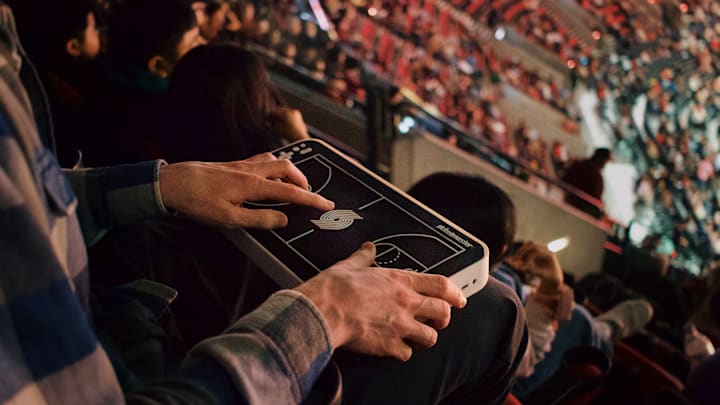Not all sports fans can see, hear, or experience games in exactly the same way. For people who are blind or have low vision, following fast-paced plays can be difficult even with play-by-play audio broadcasting. An announcer can offer general information, but the details are often lost in translation.
That’s quickly changing thanks to clever new technology that some are hailing as “braille for sports.” It’s a tablet that offers haptic feedback to the user, allowing them to track players’ movements in real time.
The technology is called OneCourt, and it’s garnering attention thanks to a TikTok user named Anthony Ferraro, who filmed himself using the tablet at a recent Portland Trail Blazers basketball game. Placing his hands on top of the tablet allowed Ferraro to track the players via vibrations that correspond in real time to the movement of the ball. If a player scored a basket, for example, the surface would vibrate twice. He could also check the score, time, and fouls via a status button.
While haptic feedback has been in use on smartphones and video game controllers for some time—think a buzzing gamepad when an enemy lands a punch—this marks one of the first instances of the technology being used to communicate sports action to blind fans. Haptic feedback may also be useful in helping people with low vision navigate physical spaces: A belt, for example, might vibrate to alert the wearer to an oncoming obstacle.
The OneCourt device traces its history to 2021 when a University of Washington student named Jerred Mace noticed a man with low vision at a soccer game following the action using a handheld model of the field. His sighted friend would guide his hands along the board to correspond with plays, allowing him to keep up with the action. Mace and colleagues then got to work on a similar device based on haptic feedback. It began attracting attention after it was presented at the 2024 Consumer Electronics Show (CES).

Leagues can acquire the tablets and offer them free to fans, similar to how closed-captioning is available to those who are deaf or hard of hearing. Portland was the first professional sports team to partner with OneCourt via Ticketmaster, which sponsors the deal. The Trail Blazers have five OneCourt devices for the 2024-25 NBA season, which will be available at the team’s home games.
Because most professional league sports have a similar playing field, the device can be used for football and baseball, as well. OneCourt plans on expanding into soccer and hockey eventually. The company is also looking to offer the device to fans for home use, with a release date to be announced.
